Genetics
Genetics is the study of how traits are passed down from parents to offspring. At the core of genetics is DNA, a molecule that contains instructions for building and maintaining living organisms. Genes, specific segments of DNA, carry these instructions. Humans have 23 pairs of chromosomes, which house our genes. Your genetic makeup, or genotype, influences your observable traits, known as the phenotype. Alleles, different versions of a gene, determine variations in traits like eye color or height.
Genetic inheritance follows specific patterns, with dominant alleles expressing their effects even in the presence of a recessive allele. Mutations, changes in the DNA sequence, can naturally occur or result from external factors, contributing to genetic diversity. Overall, genetics explores the fascinating way genetic information shapes who we are, from our physical characteristics to potential health conditions, and how these traits are transmitted through generations.
Some Interesting Facts About Genetics
Here we have discussed a few points that will help you understand some more interesting facts about Genetics. These facts highlight the complexity and diversity of the genetic world, from the intricacies of our DNA to the impact of genetics on various aspects of life.
- Shared DNA: Humans share about 99.9% of their DNA with each other. The small variations in the remaining 0.1% contribute to the diversity of traits.
- Genetic Memory: Some research suggests that experiences and environmental factors can lead to changes in gene expression, potentially passing certain “memories” of experiences to the next generations.
- Twins and Genetics: Identical twins, or monozygotic twins, have nearly identical DNA. Fraternal twins, or dizygotic twins, share about 50% of their DNA, like any other siblings.
- Epigenetics: Epigenetics is the study of changes in gene activity that do not involve alterations to the underlying DNA sequence. It explores how environmental factors can influence gene expression.
- Genetic Disorders: While most genetic variations are harmless, some can lead to genetic disorders. Examples include Down Syndrome, Cystic Fibrosis, and Huntington’s disease.
- Genetic Variation and Evolution: Genetic diversity is crucial for the survival os species. It allows for adaptation to changing environments and plays a key role in the process of evolution.
Some Terminologies in Genetics
Here are explanations for some of the important terminologies used in genetics. Understanding these terminologies is crucial for grasping the principles of genetics and how genetic information is inherited and expressed in living organisms.

- DNA (Deoxyribonucleic Acid): The fundamental molecule carrying genetic instructions. It’s a double-stranded helical structure that contains the genetic code for the development and functioning of living organisms.
- Genes: Specific segments of DNA that provide instructions for building and maintaining an organism. Genes determine traits and are the basic units of heredity.
- Chromosomes: Structures made up of DNA and proteins that carry genes. Humans typically have 23 pairs, with one set inherited from each parent.
- Genotype: The genetic makeup of an individual, comprising the specific combination of alleles (gene variants) present in their DNA.
- Phenotype: The observable characteristics or traits of an organism, resulting from the interaction between its genotype and the environment.
- Alleles: Different versions of a gene that occupy the same position (locus) on a chromosome. For example, the gene for eye color may have alleles for blue or brown eyes.
- Dominant and Recessive: Terms describing the relationship between alleles. Dominant alleles express their effects even if only one copy is present, while recessive alleles show their effects only when copies are present.
- Homozygous and Heterozygous: Homozygous individuals have two identical alleles for a particular gene (e.g., AA or aa), while heterozygous individuals have two different alleles (e.g., Aa).
- Mutation: A change in the DNA sequence. Mutation can occur naturally or be induced by external factors and may lead to variations in traits.
- Genetic Inheritance Patterns: Patterns describing how traits are passed from one generation to the next. Examples include autosomal dominant, autosomal recessive, and sex-linked inheritance.
- Genetic Diversity: The variety of genetic material within a population. High genetic diversity is essential for species’ adaptation to changing environments.
- Epigenetics: The study of changes that do not involve alterations to the underlying DNA sequence. It explores how environmental factors can influence gene expression.
Laws of Inheritance by Mendel
Gregor Mendel, an Austrian scientist, discovered the basic principles of inheritance. Mendel’s laws of inheritance are named the law of segregation, the Law of Independent Assortment, and the law of dominance. He found that traits, like eye color, are determined by “genes” passed from parents to offspring. Mendel’s laws state that genes come in pairs and segregate randomly during reproduction. Some traits can dominate others. His work laid the foundation for modern genetics, explaining how traits are inherited through generations.
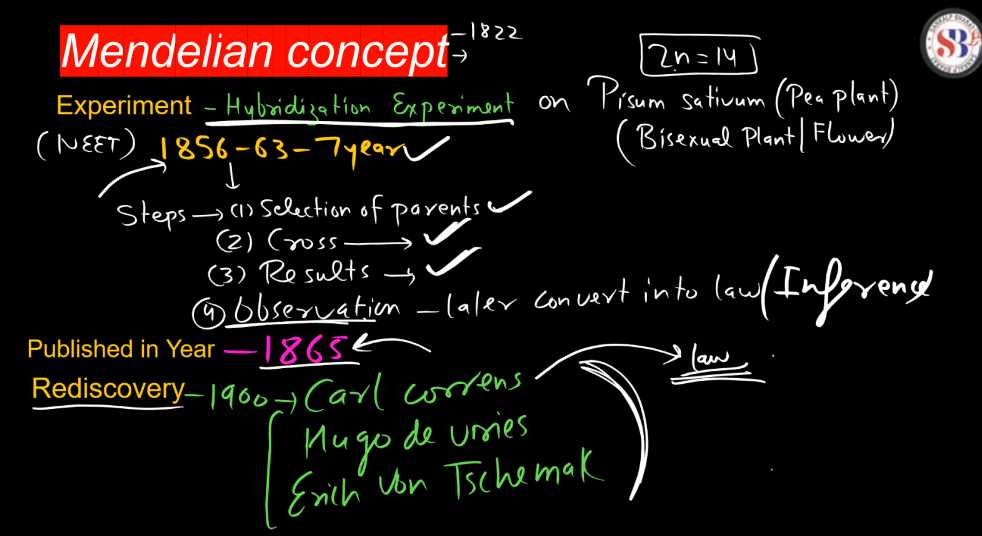
Law of Dominance
The law of dominance, proposed by Gregor Mendel, states that in a pair of alleles (gene variants), one allele can mask the expression of the other. The dominant allele determines the organism’s trait, while the recessive allele remains hidden. For example, if an organism inherits one dominant and one recessive allele for a trait, the dominant allele’s characteristics will be observed in the organism’s appearance or function.
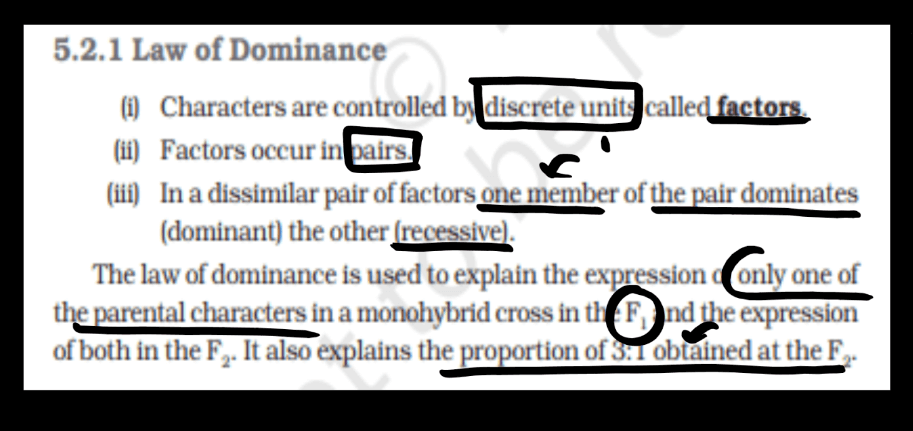
Law of Segregation
The law of segregation, part of Mendel’s principles, asserts that during the formation of reproductive cells. or gametes, the alleles (gene variants) segregate randomly. Each gamete receives only one allele for a specific trait. Consequently, when fertilization occurs, the offspring inherits one allele from each parent. This random assortment ensures genetic diversity in offspring, as traits are not predetermined but result from chance combinations of parental alleles during fertilization.
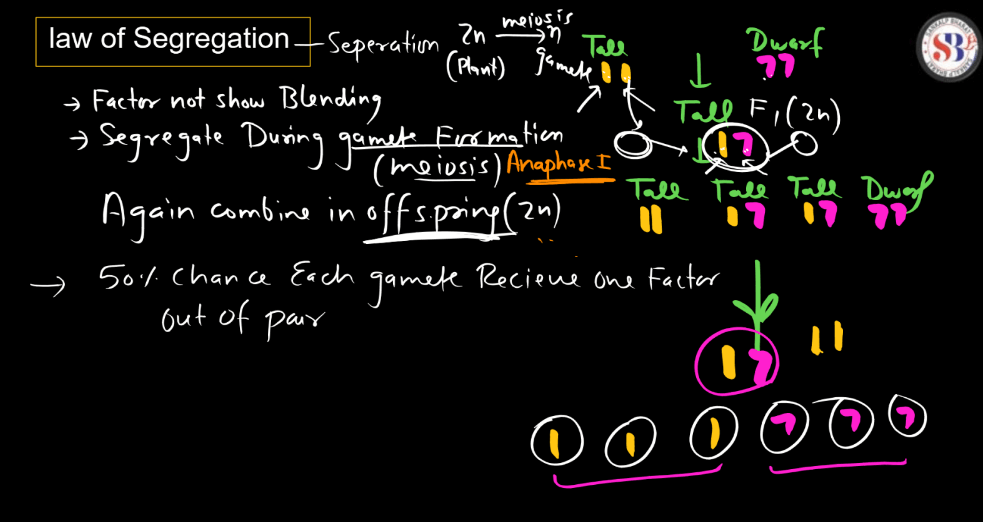
Law of Independent Assortment
The law of independent assortment, another Mendelian principle, states that genes controlling different traits segregate independently during gamete formation. This means the inheritance of one trait doesn’t influence the inheritance of another. Each gene pair sorts its allele into gametes without being influenced by the sorting of other gene pairs. This random mixing during reproduction contributes to the diversity of traits in offspring, as traits are assorted independently of each other, promoting genetic variation in subsequent generations.
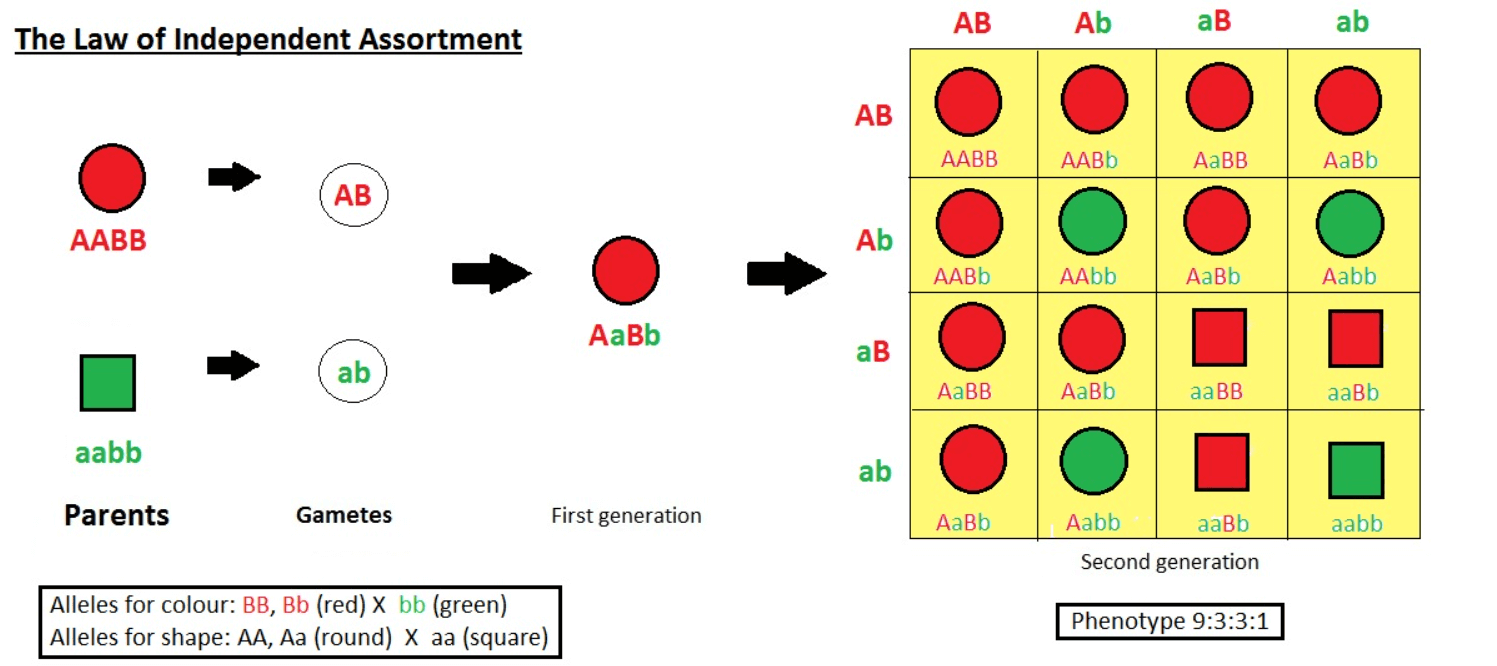
Genetic Disorders
Genetic disorders are conditions caused by abnormalities in an individual’s DNA. These abnormalities can range from single gene mutations to complex chromosomal rearrangements. It’s important to note that the severity and symptoms of genetic disorders can vary widely, and some may be managed or targeted with medical intervention. Genetic counseling and testing can help individuals understand their risk and make informed decisions about family planning.
- Cystic Fibrosis (CF): Affecting the respiratory, digestive, and reproductive systems, CF is caused by mutations in the CFTR gene, leading to the production of thick and sticky mucus.
- Down Syndrome: Resulting from an extra copy of chromosome 21, Down syndrome is characterized by intellectual disabilities and distinct physical features.
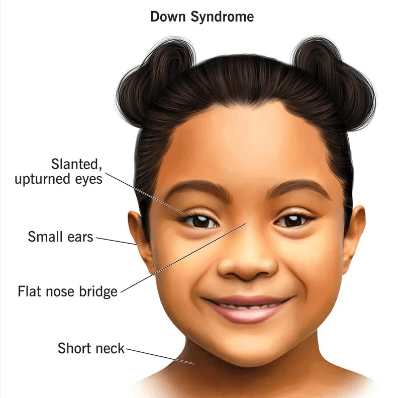
- Hemophilia: This is a bleeding disorder where the blood lacks certain clotting factors, usually due to mutations in genes involved in blood clotting.
- Huntington’s Disease: A neurodegenerative disorder, Huntington’s is caused by a mutation in the HTT gene, leading to progressive motor and cognitive decline.
- Sickle Cell Anemia: Caused by a mutation in the HBB gene, this disorder leads to the production of abnormal hemoglobin, resulting in misshapen red blood cells and various health complications.
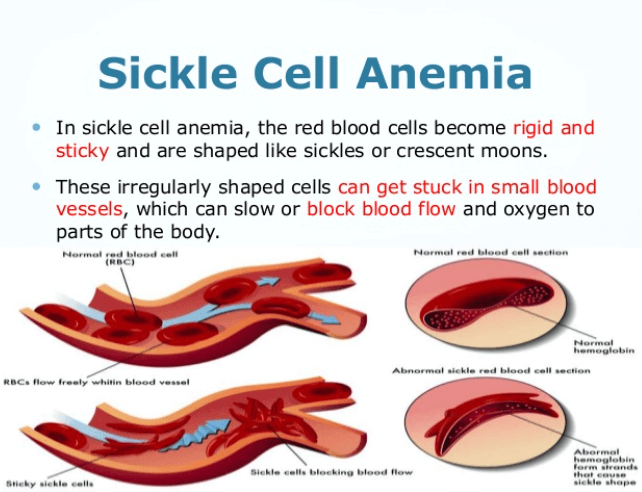
- Muscular Dystrophy: There are several types of muscular dystrophy, each caused by mutations in different genes. These conditions lead to progressive muscle weakening and loss.

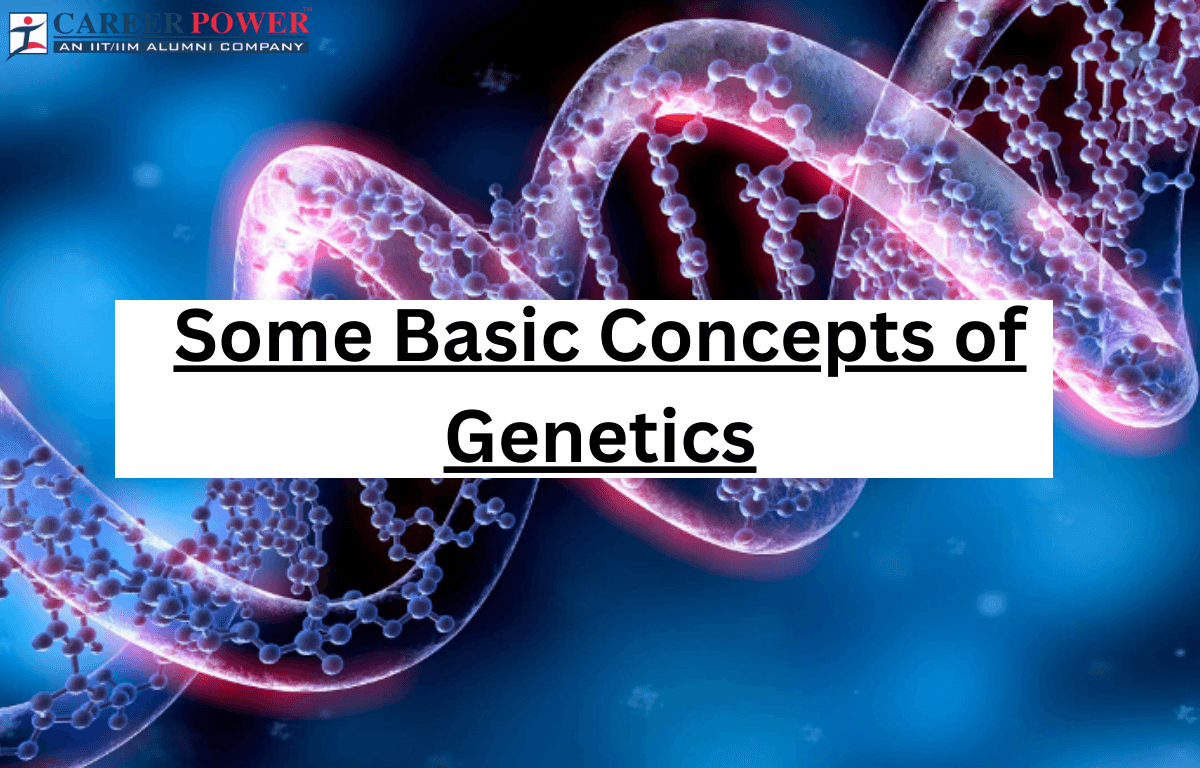

 50 Vegetables Name for Kids in English a...
50 Vegetables Name for Kids in English a...
 Food Chain: Definition, Types, Examples,...
Food Chain: Definition, Types, Examples,...
 Human Respiratory System: Definition, Di...
Human Respiratory System: Definition, Di...













